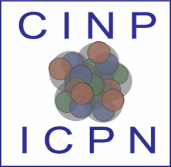Hadron Structure/QCD
Key Question #1: How do quarks and gluons give rise to the properties of strongly inter-
acting particles?
We know that hadrons, strongly-interacting composite particles such as protons, neutrons and pions, are made up of quarks and gluons, but we only have partial answers on how quarks are distributed and moving inside. Quantum Chromodynamics (QCD), the theory of the strong nuclear interaction between quarks and gluons, describes two regimes – the asymptotic freedom and confinement. While the discovery of asymptotic freedom within the context of perturbative QCD was recognized by the Nobel Prize in 2004, we still do not have a complete solution in the confinement regime, where the quark coupling strength is too large to allow the use of perturbative methods. Thus, the explanation for the observed properties of the hadrons remains one of the central problems of modern physics, requiring advances in both theory and experiment. Recent advances in lattice QCD make it possible to extrapolate full lattice QCD simulations to physical quark masses,and thus allow direct comparison to experimental observables such as spectrum of hadrons. Further developments in computational methods making full use of new computing technologies and decisive breakthroughs are anticipated in the near future. In addition, the Chiral Perturbation Theory (ChPT), an effective field theory based on chiral symmetry of QCD, can provide stringent predictions of many fundamental properties of composite systems at low energies such as electromagnetic polarizabilities. Electromagnetic polarizabilities are fundamental properties of hadrons which are especially interesting because their values reflect dynamical response of hadrons to the electromagnetic probe at different energies, and their measurement provide an important test point for ChPT, dispersion relation approaches, and lattice QCD calculations.
Canadian theorists are major contributors to lattice calculations and to predictions based on ChPT and are closely working with experimentalists on planning the measurements and providing theory input, such as radiative corrections. Experiments designed to make detailed comparisons with QCD predictions are high-priority endeavours of research at facilities across the USA, Europe and Japan, with goals of obtaining: a tomographic view of the quarks and their motion within the nucleon; the elucidation of the role of gluons and gluon self-interactions in nucleons and nuclei; and a detailed understanding of how QCD governs the transitions of quarks and gluons into pions, protons and neutrons. Hadron spectroscopy has become even more exciting since evidence for new types of groupings in heavy-quark systems have been found: tetraquark and pentaquark, candidates in the charmonium sector, and hybrids in the light-quark sector probed in pion production.
Canadians have leadership roles in a number of experiments at offshore facilities, including detailed measurements of proton, kaon and pion structure, and investigations of the spectrum of hybrid mesons containing explicit gluonic degrees of freedom. For example, a Canadian group led experimental efforts at JLab to extract the photon-beam asymmetry for η and η' , resulting in a Ph.D. thesis and a publication [The GlueX Collaboration, S. Adhikari et al., Phys. Rev. C 100, 052201(R) (2019)]. The extracted beam asymmetry afforded comparisons to theoretical models, and indicated the dominance of natural parity exchange in the reaction mechanism. Canadians looking forward to extending the meson structure and meson spectroscopy studies at the upcoming Electron-Ion Collider.
Key Question #2: What are the phases of strongly interacting matter, and what roles do they play in the cosmos?
Nuclei make up 99.9% of the visible matter in the universe. At the highest densities, yet at still rather low temperatures, the quarks making up the nucleons of nuclear matter may form a new state of matter, which is color-superconducting. Exotic nuclear matter can also be created by colliding nuclei at relativistic energies. In this case, ‘nuclear temperatures’ can reach values that represent a state of matter (the quark-gluon plasma) as it existed during the first moments after the Big Bang. This is an active field of study at international facilities such as RHIC in the USA, and the LHC at CERN. There are a number of very active Canadian theorists who are making significant contributions to our understanding of the phase diagram of nuclear matter. Their work has significant bearing on the quest to characterize the properties of the quark-gluon plasma, and
for our understanding of astrophysical phenomena such as neutron star structure and the evolution of the early universe. In recent years, the nuclear theory group at McGill University has developed and put forward a 3D, relativistic, viscous fluid-dynamical approach that has been successfully used to model the time-evolution of the high-energy nuclear collisions. A fundamental question in all studies of the many-body effects observed in high energy heavy ion collisions is whether the observed correlations develop dynamically or are already present in the initial states. A new approach has recently been
constructed [Scott McDonald, Sangyong Jeon, Charles Gale. Nucl. Phys. A982 (2019) 239] which properly takes into account the the evolution in full 3-dimensional space. Importantly, the physics of the IP-Glasma relies on that of saturation: the scale at which the non-linearities of the gluon field manifest themselves. The exploration of the saturation regime is a central theme of the Electron-Ion Collider which will push our study of QCD to new frontiers.
